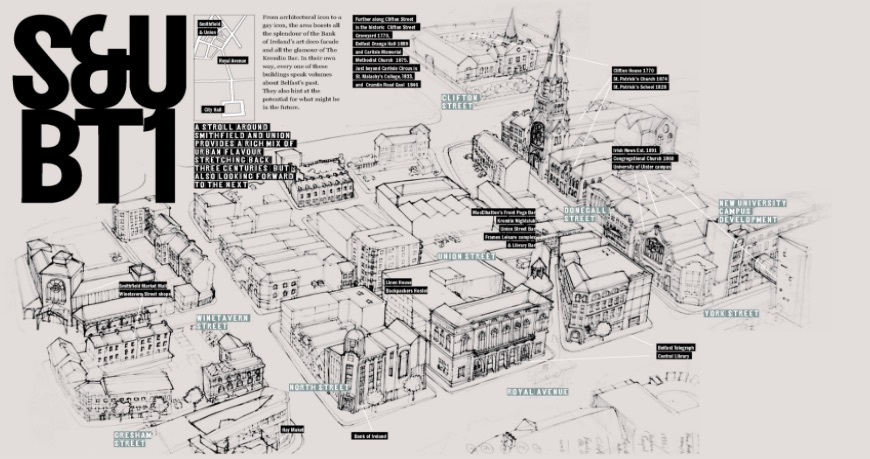

From architectural icon to a gay icon, the area boasts all the splendor of the Bank of Ireland’s art deco facade and all the glamour of The Kremlin Bar. In their own way, every one of these buildings speak volumes about Belfast’s past. They also hint at the potential for what might be in the future.
Belfast is an industrial city. In the mid 1800s, the north side of Belfast was in its ascendency. Belfast shipbuilding was entering its golden era. Workman and Clark’s yard became the focal point for the rapidly expanding port. Cotton and later linen manufacture also flourished – industries that thrived on water power provided by the streams running down from the Belfast Hills.
By the end of the nineteenth century the north end could claim the largest linen mill in the world at York Street Spinning Mill. Neighbouring Gallaher’s tobacco factory was also the largest of its kind in the world at that time. population grew rapidly from 20,000 to 350,000 people.
The pace of progress rapidly affected the nature of the district. Most notable was the opening of Royal Avenue in the 1880’s and the widening and re-development of North Street in the 1890’s. The major public buildings in the district reflect an air of extraordinary confidence and expansion.
But as with any boom, a downturn was inevitable. And the great depression of the inter-war years particularly affected local industry. Workman and Clark’s shipyard closed forever in 1935.
The north end of the city was severely affected by the war time blitz of May 1941. Motorway construction cut it off from its most immediate neighbourhoods. The troubles also left its mark on Smithfield and Union, as it too suffered frequent bomb damage.
![]()
The re-development of the Central Library scheduled for 2011-15 has the potential to really enhance the district. The expansion of the University of Ulster’s York Street campus will lead to a major new influx of creative young people to the area. Progress and change are in the air once again.















